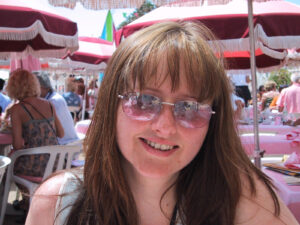To plot or not to plot? – crime writing tips by Cal Moriarty

Plotter or pantser?
To plot or not to plot, that is the existential question weighing on most writer’s minds when setting out on their debut novel journey. Before becoming a novelist I started as a screenwriter and never met a fellow screenwriter who didn’t plan their scripts meticulously down to every plot point and scene. For screenwriters it’s a totally alien concept not to plot and, major bonus, it avoids unnecessary (unpaid) rewrites.
There are, of course, conflicting schools of thought on this and many successful novels have indeed been written by pantsers including legends Stephen King and Margaret Atwood. At a friend’s lunch party a few years ago, a winner of the Booker told me they don’t plot, they just sit down and start typing. As a screenwriter, this notion filled me with immediate all-consuming terror, the kind one might feel when falling from a plane without a parachute. Plotters will understand how it totally put me off my lunch.
The demi-pantser
Then it dawned on me that while writing my debut novel, The Killing of Bobbi Lomax I had at least been a demi-pantser: I had plotted out the first 40k words, knew the characters and the ending, but had a gap where approximately 35k other words should have been. I had then thrown myself out of a plane, headed towards earth and quickly had to conjure up the parachute before I hit rock bottom. A lot of those 35k words form scenes in my novel that miraculously worked well, or so people have told me. I think this was mainly because having already written the first half, created all the characters and knowing where I wanted the story to end, meant that I could harness maximum creative freedom without that every day pantser blank page panic of ‘where is it going’, ‘who are these people’, ‘where’s my sub-plot’. This demi-pantser technique avoided all the things I would excessively worry about if I started the first day staring at a blank page lacking ideas, characters, or anything that might serve as a map to get me out of hell via 80k words.
Starting your journey
I think acing pantsing might be a lot easier once you have other creative projects written because you will understand structure, character development, plotting, pace etc. But, for the avoidance of writer stress and/or writers block on your debut novel, if it is indeed your first creative outing, I would recommend at least plotting the beginning, the middle, and the ending and several other major plot points. All this in addition to creating a crackingly original main character and a suitably matched antagonist. You don’t have to stick to your plotting, you might find something way more amazing along the way, as often happens once the blank page pressure is off. But my advice would be to at least pick a destination and a few pit-stops before you start the journey, especially if you have just a short time to get there and you fear running out of gas on the motorway.
Self-confessed pantsers & plotters
Tony Kent, author of the Richard & Judy Book Club pick Marked For Death is firmly in the pantser camp.
‘I am in awe of plotters and wish I could do it. They get the same enjoyment of discovering where their story is going to go, without the sheer terror of finding that out while actually writing it!’
Marnie Riches, author of Tightrope and the George McKenzie series, is a dedicated plotter:
‘Plotting definitely works for me and speeds up the whole process as you can’t write yourself down a cul-de-sac so easily. Before I start, I write a 2-8 page synopsis for each of my novels.’
Neil Broadfoot, author of No Place To Die:
‘I like to fly by the seat of my pants, I never know what’s going to happen in the chapter after the one I’m writing.’
Whatever you choose, all my best wishes for your writing in the weeks ahead.
Next month I’ll be looking at how you can write for your genre or sub-genre and still be imaginative and surprise the reader while hitting all the tropes readers love so much.
Cal Moriarty is an award-winning screenwriter, director, producer, novelist and educator. Her debut novel The Killing of Bobbi Lomax was long-listed for the CWA John Creasey New Blood award, 2015. Her second, Ten of Swords is out next summer from Faber. She is currently writing her third. Cal loves sharing her knowledge and has taught screenwriting to some of the world’s finest authors.

Join the CWA
Become part of a thriving community of successful crime writers with invaluable support, expertise and marketing opportunities for all our members.


